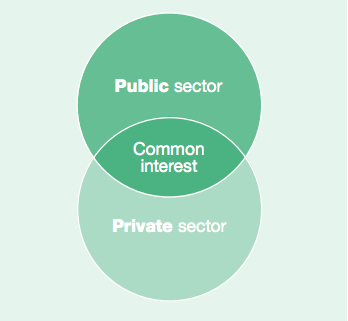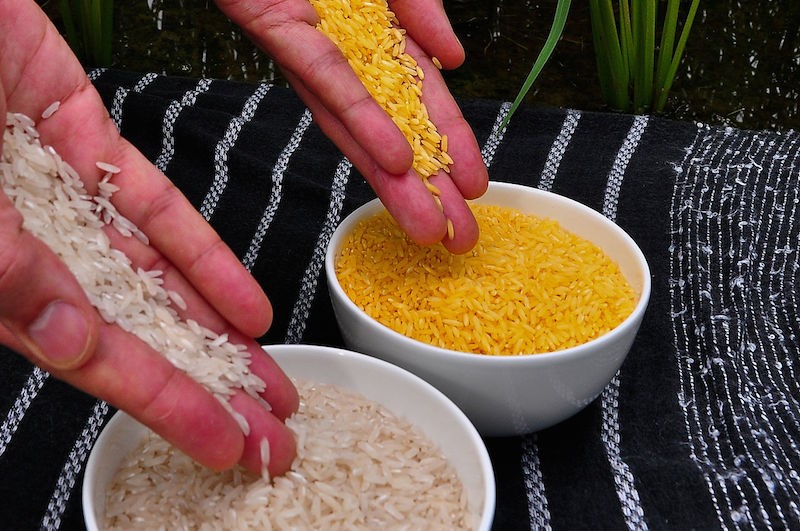Public-Private Partnerships – In Agriculture and Beyond
There is a common misconception that companies “buy and pay for” university research. But the truth is that there is a much more ongoing, collaborative relationship between the private sector and academia. The two have been working together for over a century to explore, refine and advance scientific ideas.
The collaboration between the private sector and academic institutions exists not just in agriculture, but in other scientific fields such as healthcare, renewable energy, manufacturing and more. In this post, we'll explore how companies, universities, and other entities work together to support programs to benefit the public sector through Public-Private Partnerships or PPPs.
What are PPPs?
As defined by the National Council for Public Private Partnerships, a PPP is an “arrangement between a public agency (federal, state or local) and a private sector entity. Through this agreement, the skills and assets of each sector (public and private) are shared in delivering a service or facility for the use of the general public.”
PPPs may bring together various organizations, including government, local and international NGOs, and research institutions, among others. The purpose of the partnership can vary from product development (such as golden rice), to advocacy and education (e.g. African Malaria Partnership or the Global Business Coalition on HIV). What is consistent among PPPs is that they share a common interest or goal – such as improving human health or addressing an environmental issue.

Why are PPPs important?
According to the International Food Policy Research Institute, additional benefits of PPPs include:
- reducing the costs and risks entailed in research;
- improving the quality and relevancy of research results due to synergies among the partners, and ensure greater adoption by user groups;
- leading to the accumulation of complementary abilities, skills, and resources;
- leading to higher competitiveness and better market positioning as a result of improved competencies; and
- promoting development and poverty reduction by providing small-scale farmers with access to knowledge and technologies.
Here the World Bank also provides an overview of the benefits and risks of PPPs.
What are examples of PPPs in agriculture?
One example outlined in this CropLife International report, is the BioCassava Plus project which is working to improve the nutritional quality of cassava, the primary source of calories for over 250 million people in sub-Saharan Africa. Both public and private researchers are working together to focus on enhancing levels of zinc, iron, protein and vitamins in BioCassava.
Additional examples, including a partnership with between the International Potato Centre, USAID and the private sector to improve potato productivity in Ethiopia, Kenya, Rwanda, Tanzania and Uganda, are available here.
 Golden Rice: The creation of Golden Rice – a genetically modified rice strain which could provide nutrients to people around the world who suffer from vitamin A deficiency – is a combination of “efforts and resources of individuals from universities, public research institutions, and a major multinational corporation in a public-private partnership designed to address a serious problem facing poor people.” More on this is available in this article from the International Food Policy Research Institute. (Image Source)
Golden Rice: The creation of Golden Rice – a genetically modified rice strain which could provide nutrients to people around the world who suffer from vitamin A deficiency – is a combination of “efforts and resources of individuals from universities, public research institutions, and a major multinational corporation in a public-private partnership designed to address a serious problem facing poor people.” More on this is available in this article from the International Food Policy Research Institute. (Image Source)
Seed Central, from the University of California, Davis and SeedQuest: Established in 2010, Seed Central is an initiative of the Seed Biotechnology Center at UC Davis and SeedQuest to “facilitate research collaborations and IP & technology transfer,” among other objectives.
What are examples of PPPs outside of agriculture?
- Silicon Valley: According to the Science Business Innovation Board, “for over five decades, a dense web of rich and long-running collaborations in the region have given rise to new technologies at a breakneck pace, and transformed industries while modernising the role of the university.”
- This video explores UNC Charlotte’s strategic partnership with Siemens and also discusses what makes a good collaborative partnership.
- This report details 14 case studies including a long-running collaboration between Nokia and Aalto University focused wireless technologies, an industry-university partnership between Microsoft, Cisco Intel and the University of Melbourne to transform education, and a collaboration between Siemens and MIT in the area of brain research.
- And here you can check out PPP case studies from various sectors including energy, public safety and transportation, provided by the National Council for Public Private Partnerships.
- The World Bank delivers and list of PPPs by sector here and links to PPP units around the world here.
Looking for information on PPPs that the founding members of GMO Answers participate in?
- Information about the Syngenta Foundation’s partnerships are available here, including their work with colleagues at the Centro Internacional de Mejoramiento de Maíz y Trigo (International Maize and Wheat Improvement Center - CIMMYT) in Mexico to improve disease resistance in wheat.
- Different ways Bayer HealthCare collaborates with academia is available here; learn about Bayer’s PPP with Integrated Vegetation Management Partners to improve pollinator and wildlife habitats here.
- Information about Monsanto’s public-private partnerships, can be found here and their commitment to public-private collaborations and belief that they are “essential to the advancement of science, innovation and agriculture” can be found here. Monsanto’s scholarship program for future students pursuing STEM careers and graduate programs is available here.
- Dow Agroscience’s partners for change are outlined here, including a partnership with the The Nature Conservancy to incorporate nature into business goals and decisions.
- BASF Information on BASF’s partnerships with universities and commitment to the power of “team chemistry” is available here. In addition to university partnerships, BASF is committed to community outreach and science education for children between the ages of 6-18.
- DuPont Pioneer’s long-term collaborative approach is outlined on this page. Also of note, DuPont Pioneer’s Young Professors Program has awarded $50 million grants to more than 680 young professors at over a hundred universities in 14 countries. Learn more in this infographic.
In summary, public research, private search, businesses and non-profits all have a role to play in contributing to scientific advancement and application. Collaboration through public-private partnerships is one way to help bridge the gap between sectors and achieve the same or compatible goals.
Don’t forget to check out the other posts in our Stand up for Science Series which discuss myths about research funding here and our response to the US Right to Know Freedom of Information Act.
